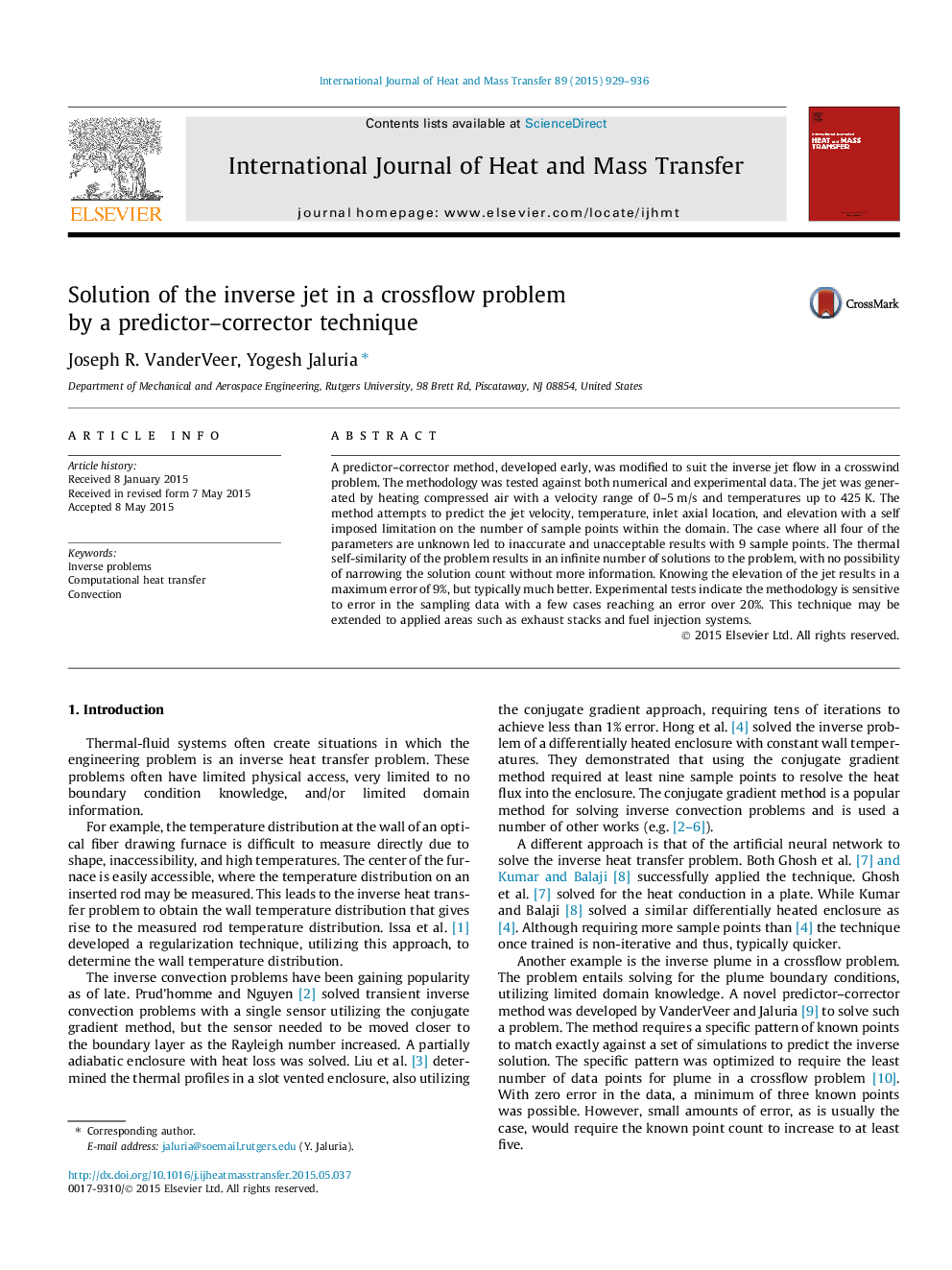| Article ID | Journal | Published Year | Pages | File Type |
|---|---|---|---|---|
| 7056626 | International Journal of Heat and Mass Transfer | 2015 | 8 Pages |
Abstract
A predictor-corrector method, developed early, was modified to suit the inverse jet flow in a crosswind problem. The methodology was tested against both numerical and experimental data. The jet was generated by heating compressed air with a velocity range of 0-5Â m/s and temperatures up to 425Â K. The method attempts to predict the jet velocity, temperature, inlet axial location, and elevation with a self imposed limitation on the number of sample points within the domain. The case where all four of the parameters are unknown led to inaccurate and unacceptable results with 9 sample points. The thermal self-similarity of the problem results in an infinite number of solutions to the problem, with no possibility of narrowing the solution count without more information. Knowing the elevation of the jet results in a maximum error of 9%, but typically much better. Experimental tests indicate the methodology is sensitive to error in the sampling data with a few cases reaching an error over 20%. This technique may be extended to applied areas such as exhaust stacks and fuel injection systems.
Related Topics
Physical Sciences and Engineering
Chemical Engineering
Fluid Flow and Transfer Processes
Authors
Joseph R. VanderVeer, Yogesh Jaluria,
